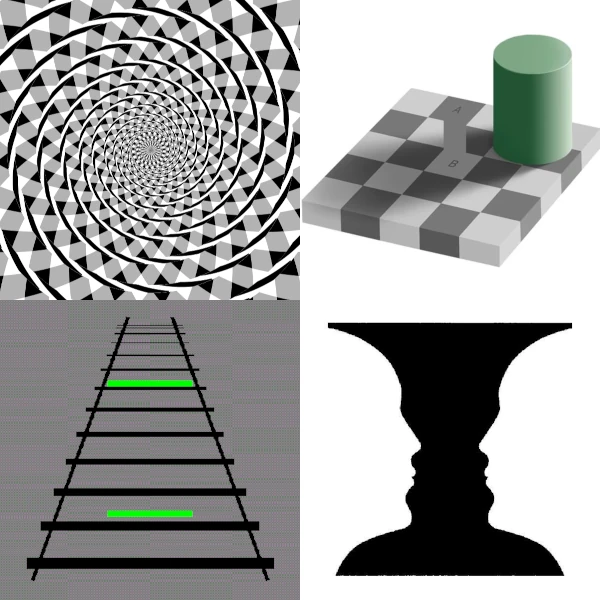
Image: On this chessboard, squares A and B have exactly the same color.
This incredible illusion can be checked by clicking on the image. This illusion of the same color illustrates the cognitive stage well. From a precise image of reality, our brain provides us with a coherent result, corresponding to our knowledge. He interprets the colors, shapes and movements of objects and then modifies or completes the missing elements if necessary to give things a certain coherence. In other words, he wants to see the sensible world as an intelligible world as he conceives it, as he has understood it, as he has been taught. Since birth, seeing is knowledge and our brain is blind until it has learned to see.
Credit: Edward H. Adelson Professor of Vision Science
When we look at something, we feel like we are seeing directly with our eyes. But in reality, what we see is the result of a complex process that occurs in our brain.
It all starts when light enters our eyes. This light passes through the cornea and the iris, then it reaches the retina, which is at the back of the eye. The retina contains cells called photoreceptors, which convert light into electrical signals.
These electrical signals are then sent along the optic nerves to the brain. The brain processes these signals and turns them into images that we can see. In fact, what we see is not actually in our eyes, but in our brain.
The brain also uses information from other parts of the body, such as our ears and nose, to help us understand what we see. For example, if we see a red apple, our brain knows it's probably sweet and juicy, thanks to information from our nose and mouth.
In short, we don't see directly with our eyes, but with our brain, which processes the electrical signals sent by the photoreceptors in our eyes to create the images we can see.